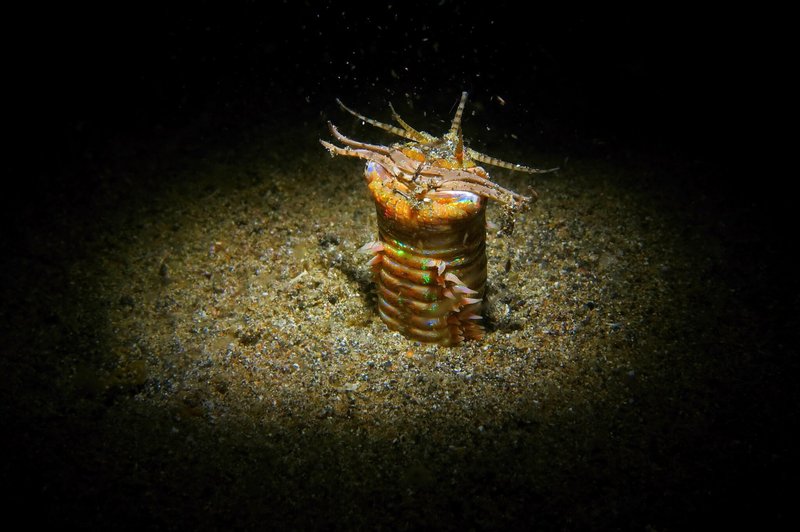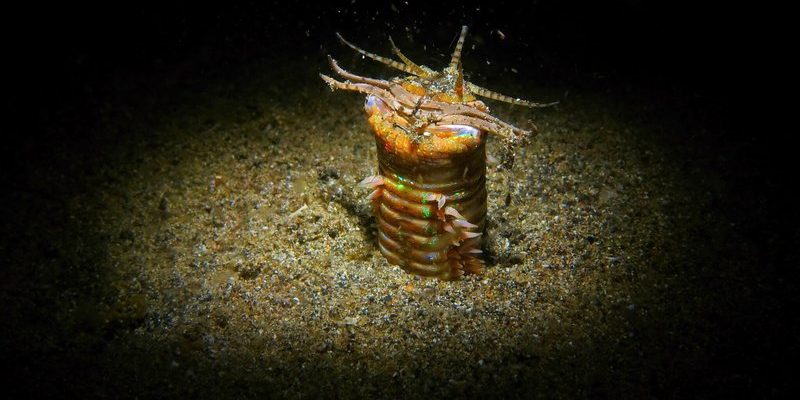
Bobbit worms thrive in specific conditions, particularly when it comes to the sediment they live in. Imagine living in a cozy bed of soft, fine sand—but not too shallow or too deep. Just right! The sediment depth is crucial because it influences their safety, feeding habits, and overall well-being. Let’s dive into the depths of what these requirements are and why they matter for our wriggly friends in the ocean.
What is a Bobbit Worm?
Before we get into sediment depth, let’s take a moment to understand what a Bobbit worm actually is. These worms belong to the family Eunicidae and can grow up to 10 feet long! They have a striking appearance, with bright colors and a mouth full of sharp jaws, which helps them catch prey. Bobbit worms are primarily found in the warm waters of the Atlantic and Indo-Pacific Oceans, often hiding beneath the sand.
In their natural habitat, these worms spend much of their time buried in the sediment, waiting to ambush unsuspecting fish and crustaceans. It’s quite the dramatic lifestyle; imagine being a ninja under the sand, ready to strike! Understanding their habitat requirements, especially sediment depth, is crucial for anyone looking to keep these worms in an aquarium or study them in the wild.
Importance of Sediment Depth
You might be wondering why the sediment depth is such a big deal for Bobbit worms. Here’s the thing: sediment depth directly affects their ability to survive and thrive. If the sediment is too shallow, they’re at risk from predators or simply being washed away in strong currents. On the other hand, if it’s too deep, they might struggle to reach the surface for necessary oxygen.
Generally, a sediment depth of about **6 to 12 inches** is considered ideal for Bobbit worms. This depth provides enough space for them to burrow comfortably while also remaining close to the surface layer for feeding. Maintaining this balance in sediment depth is critical for their well-being and helps replicate their natural environment in aquariums.
Ideal Types of Sediment
So, what kind of sediment do Bobbit worms prefer? Think of the beach—fine, soft sand is where they feel most at home. In their natural habitat, they typically favor **fine to medium-sized grain sand**. This type of sediment allows them to burrow easily and offers the protection they need from potential predators.
Avoid coarse or rocky substrates, as these can make it difficult for the worms to establish themselves. Any sharp edges can also lead to injuries, which is the last thing you want for your aquatic pets. The right type of sediment not only enhances their comfort but also plays a vital role in their feeding behavior since it can trap nutrients in the water, thus attracting prey.
Creating a Suitable Habitat
If you’re considering keeping Bobbit worms in an aquarium, creating the right habitat is essential. Start by choosing a suitable aquarium size. A **minimum of 30 gallons** is recommended to provide enough space for these creatures to stretch out.
Here’s what you’ll need to do:
- Layer the substrate: Add the ideal sediment depth of **6 to 12 inches** of fine sand or crushed coral to the bottom of the tank.
- Water parameters: Maintain stable water conditions, especially temperature (around 75-82°F) and salinity (1.020-1.025 specific gravity).
- Filtration: Ensure good water flow without creating strong currents that can disturb the sediment. A gentle filter will do the trick.
Following these steps will help replicate their natural habitat, allowing your Bobbit worms to thrive.
Feeding and Care Considerations
Caring for Bobbit worms goes beyond just creating the right habitat. Feeding them is another crucial aspect. Bobbits are carnivorous and eat a range of marine life, including fish and crustaceans. They’re opportunistic feeders, meaning they’ll take whatever comes their way—so adjusting your tank’s diet based on what’s available is key.
Here’s a quick guide for feeding:
- Live food: Offer live fish or shrimp as their primary diet.
- Frozen options: You can also give them frozen foods, but make sure to thaw them first.
- Feeding frequency: Feed them every few days to avoid overfeeding, which can pollute the water.
Watching them capture and consume their food is fascinating! Just remember to keep an eye on tank conditions after feeding to maintain a healthy environment.
Common Mistakes to Avoid
If you’re eager to set up an aquarium for Bobbit worms, there are a few common pitfalls you’ll want to avoid. First, make sure you don’t use gravel or rough substrates. As mentioned earlier, these can be harmful and uncomfortable for the worms.
Another common error is keeping the sediment depth insufficient. If it’s too shallow, your worms may feel exposed and stressed. This stress can lead to health problems or decreased appetite.
Lastly, avoid overstocking your tank. Bobbit worms need space to thrive, and overcrowding can lead to competition for food and resources. This leads to a less harmonious environment overall.
Why Sediment Depth Matters for Ecosystems
Understanding the sediment depth requirements for Bobbit worms isn’t just about keeping them alive; it’s about preserving an entire ecosystem. These worms play a significant role in their habitats, helping to aerate the sediment and create a balanced environment for other marine life.
When sediment depth is correct, it not only keeps Bobbit worms happy but also supports the health of other organisms living in the same area. For instance, the nutrients released from the sediment benefit various small creatures that rely on a rich ecosystem for survival.
So, when we appreciate the depth of sediment needed for Bobbit worms, we’re also acknowledging their role in marine biodiversity. It’s a fascinating cycle of life that highlights how all elements in an ecosystem are interconnected.
In conclusion, providing a suitable habitat for Bobbit worms is more than just ensuring they have the right sediment depth; it’s about understanding their needs and the broader impact they have in their environment. Whether you’re a marine enthusiast or just curious about these incredible creatures, recognizing how sediment depth affects their lives invites a greater appreciation for the wonders of our oceans.

